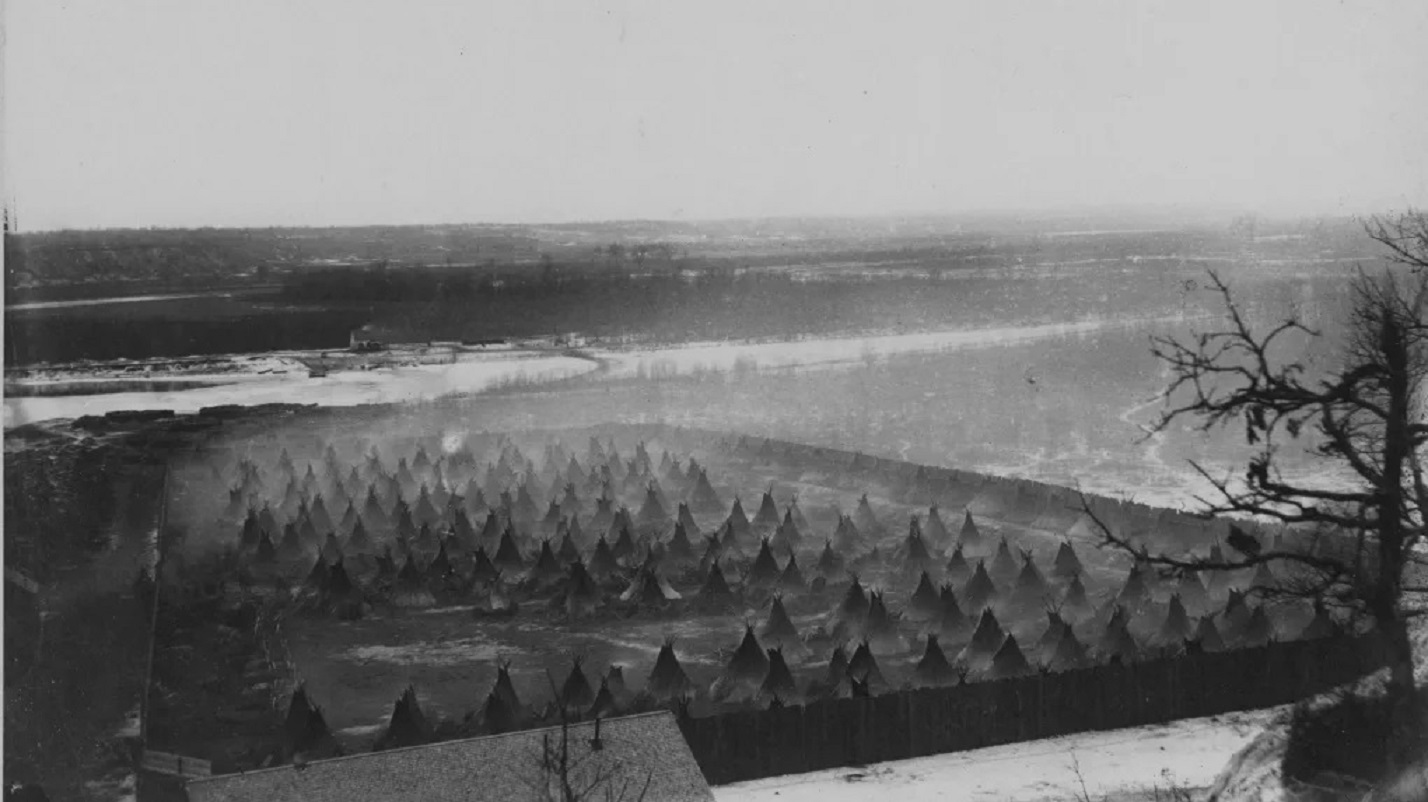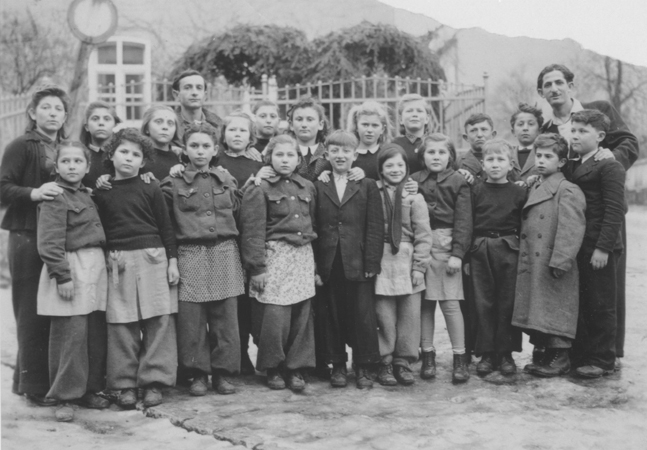|
Jānis Kalmīte
Jānis Kalmīte (2 March 1907, Kauguri parish (now Valmiera Municipality) - 3 July 1996, USA) was a Latvian expressionist painter and among the best-known artists in the Latvian post-World War II diaspora community. His name is associated with the development of a singular theme – the ''rija'' or threshing barn. Rijas, were historically among the oldest structures on the traditional Latvian homestead. Throughout his half-century of exile from Latvia, Kalmīte transformed the rija into an artistic symbol for the persistence of Latvian ethnic culture in the face of invasion and occupation by foreign powers. Coming of age during the first period of Latvia’s independence between the two World Wars, Kalmīte studied in the figural master studio of Ģederts Eliass at the Latvian Academy of Art, from which he graduated in 1935. He joined the artists’ society Mūksalieši, whose stated mission was to develop a Latvian national art, following in the footsteps of artists such as ... [...More Info...] [...Related Items...] OR: [Wikipedia] [Google] [Baidu] |
Art Academy Of Latvia
The Art Academy of Latvia () is an institution of higher education and scientific research in art, located in Riga, Latvia. The neo-Gothic brick building is located on Krišjānis Valdemārs Street, next to the National Museum of Art. In autumn 2021, the LMA together with the University of Lapland in Finland plan to enrol students in the two-year international Master's programme "Service Design Strategies and Innovation". The study process will take place internationally both in Kuldīga and Rovaniemi, Finland. Organization Faculties The Academy has 5 faculties: * Faculty of Visual Arts (2D) :* Department of Painting :* Department of Graphic Art :* Department of Textile Art :* Department of Drawing * Faculty of Visual Plastic Arts (3D) :* Department of Sculpture :* Department of Ceramics :* Department of Glass Art * Faculty of Design :* Department of Functional Design :* Department of Environmental Art :* Department of Metal Design :* Department of Fashion Design * Faculty of ... [...More Info...] [...Related Items...] OR: [Wikipedia] [Google] [Baidu] |
Riga
Riga ( ) is the capital, Primate city, primate, and List of cities and towns in Latvia, largest city of Latvia. Home to 591,882 inhabitants (as of 2025), the city accounts for a third of Latvia's total population. The population of Riga Planning Region, Riga metropolitan area, which stretches beyond the city limits, is estimated at 847,162 (as of 2025). The city lies on the Gulf of Riga at the mouth of the Daugava (river), Daugava river where it meets the Baltic Sea. Riga's territory covers and lies above sea level on a flat and sandy plain. Riga was founded in 1201, and is a former Hanseatic League member. Riga's historical centre is a UNESCO World Heritage Site, noted for its Art Nouveau/Jugendstil architecture and 19th century wooden architecture. Riga was the European Capital of Culture in 2014, along with Umeå in Sweden. Riga hosted the 2006 Riga summit, 2006 NATO Summit, the Eurovision Song Contest 2003, the 2013 World Women's Curling Championship, and the 2006 IIHF Wo ... [...More Info...] [...Related Items...] OR: [Wikipedia] [Google] [Baidu] |
Latvian Diaspora
The Latvian diaspora refers to Latvians and people of Latvian descent residing outside Latvia. According to estimates by the Latvian Foreign Ministry, as at 2012, about 370,000 Latvian citizens permanently resided outside of Latvia, most of them having emigrated in the preceding decade.Diaspora Policy in Latvia - Ministry of Foreign Affairs of Latvia official website The largest Latvian communities are in the , the , |
Minneapolis, Minnesota
Minneapolis is a city in Hennepin County, Minnesota, United States, and its county seat. With a population of 429,954 as of the 2020 United States census, 2020 census, it is the state's List of cities in Minnesota, most populous city. Located in the state's center near the eastern border, it occupies both banks of the Upper Mississippi River and adjoins Saint Paul, Minnesota, Saint Paul, the state capital of Minnesota. Minneapolis, Saint Paul, and the surrounding area are collectively known as the Minneapolis–Saint Paul, Twin Cities, a metropolitan area with 3.69 million residents. Minneapolis is built on an artesian aquifer on flat terrain and is known for cold, snowy winters and hot, humid summers. Nicknamed the "City of Lakes", Minneapolis is abundant in water, with list of lakes in Minneapolis, thirteen lakes, wetlands, the Mississippi River, creeks, and waterfalls. The city's public park system is connected by the Grand Rounds National Scenic Byway. Dakota people orig ... [...More Info...] [...Related Items...] OR: [Wikipedia] [Google] [Baidu] |
Bad Wurzach
Bad Wurzach (; until 1950 Wurzach) is a spa town in the state of Baden-Württemberg in southern Germany. It is a well known health-resort destination, and home to the oldest bog spa (in German: ''Moorheilbad'') in Baden-Württemberg, as well as one of the largest contiguous raised bog areas in Europe. It is situated northeast of Ravensburg and part of Ravensburg County, located in the Upper Swabia region. Since 1950 the town has carried the predicate Bad (spa). It is the third-largest municipality by area in the state of Baden-Württemberg, second only to Stuttgart, which is the capital of the state, and Baiersbronn. Geographical location The municipality of Bad Wurzach (a spa town) lies in a broad lowland between the regions of Allgäu and Upper Swabia. Castle and town are adjacent to the so-called Wurzacher Ried ( :de:Wurzacher Ried, Wurzach Reed Marsh). The "Ried" is a very large mire. Covering almost 7 square miles (18 km2) it is the largest contiguous, intact ... [...More Info...] [...Related Items...] OR: [Wikipedia] [Google] [Baidu] |
Latvian National Museum Of Art
The Latvian National Museum of Art () is an art museum in Riga, Latvia. It contains the largest collection of national art in Latvia. The museum houses more than 65,000 works of art reflecting the development of professional art in the Baltic area and in Latvia from the middle of the 18th century until the present time. The museum is located in Riga at Janis Rozentāls Square. History The main building of the museum was built between 1903 and 1905 and is a notable historicist-style structure. The building was designed by the Baltic German architect Wilhelm Neumann, who was also the museum's first director from 1905 to 1919. It is one of the last eclectic-style buildings constructed in Riga, designed in Baroque forms and finished with plaster, sandstone, and granite. The sculptural groups were created by August Volz, while the paintings were done by Vilhelms Purvītis and G. Rozens. The interior decoration features Art Nouveau elements. Ludwig Kerkovius, who served as the ... [...More Info...] [...Related Items...] OR: [Wikipedia] [Google] [Baidu] |
Solo Exhibition
A solo show or solo exhibition is an art exhibition, exhibition of the work of only one artist. Rather than a group of artists who collaborate to form an exhibition. The artwork may be paintings, drawings, etchings, collage, sculpture, or photography. The creator of any artistic technique may be the subject of a solo show. Other skills and crafts have similar types of shows for the creators. Having solo shows of one's artwork marks the achievement of success and usually is accompanied by receptions and a great deal of publicity. The show may be of current work being produced, those from a single time period, or representative work from different periods in the career of the artist, the latter is termed a ''retrospective''. History Art exhibitions have Art exhibition#History of art exhibitions, a history that dates back to 1623. It is thought that the first solo exhibition in Britain was staged by Joseph Wright of Derby in 1785, the year after he refused to become a Royal Academy, ... [...More Info...] [...Related Items...] OR: [Wikipedia] [Google] [Baidu] |
Valmiera
Valmiera () is the second largest city of the historical Vidzeme region, Latvia, with a total area of . As of 2002, Valmiera had a population of 27,323, and in 2020, it was at 24,879. It is a Administrative divisions of Latvia, state city, and is the seat of the Valmiera Municipality. Valmiera is one of the oldest cities in Latvia; it was a member of the Hanseatic League. According to the ethnic composition, Valmiera has the largest proportion of Latvians, ethnic Latvians among the state cities. Valmiera lies at the crossroads of several important roads, to the north-east from Riga, the capital of Latvia, and south of the border with Estonia. Valmiera lies on both banks of the Gauja River. Names and etymology The name was derived from the Old High German, Old German given name or the Slavic names, Slavic name . The town may have been named after the kniaz of the Principality of Pskov Vladimir Mstislavich (Pskov), Vladimir Mstislavich, who became a vassal of Albert of Riga i ... [...More Info...] [...Related Items...] OR: [Wikipedia] [Google] [Baidu] |
Latvian Independence Movement
The modern Latvian independence movement was the resistance movement to foreign occupation of the Republic of Latvia during Soviet and Nazi German occupation (1940–1991). First year (1940–1941) of occupation The effects of the Molotov–Ribbentrop Pact of August 23, 1939 assigned Latvia to the Soviet sphere of influence. On August 5, 1940, the Soviet Union forcibly annexed Latvia. On June 14, 1941, 15,000 Latvian citizens were forcibly deported to Gulag camps and a large number of army officers shot. The occupation and forced annexation into the USSR was not recognised in at least de jure by many countries, such as the United States, the United Kingdom, Ireland, Canada, France, West Germany, Mexico etc. until the restoration of independence. Nazi German occupation (1940–1944/1945) Shortly after the start of the German–Soviet War in 1941, the territory of Latvia was occupied and governed as a part of Reichskommissariat Ostland along Lithuania and Estonia. Tens of thou ... [...More Info...] [...Related Items...] OR: [Wikipedia] [Google] [Baidu] |
Displaced Persons Camps In Post–World War II Europe
Displaced persons camps in post–World War II Europe were established in Germany, Austria, and Italy, primarily for refugees from Eastern Europe and for the former inmates of the Nazi German concentration camps. A "displaced persons camp" is a temporary facility for displaced persons, whether refugees or internally displaced persons. Two years after the end of World War II in Europe, some 850,000 people lived in displaced persons camps across Europe, among them Armenians, Czechoslovaks, Estonians, Greeks, Bulgarians, Poles, Latvians, Lithuanians, Yugoslavs, Jews, Russians, Ukrainians, Hungarians, Kalmyks, and Belarusians. DP Camps in Europe Intro from: ''DPs Europe's Displaced Persons, 1945-1951'' by Mark Wyman At the end of the Second World War, at least 40 million people had been displaced from their home countries, with ab ... [...More Info...] [...Related Items...] OR: [Wikipedia] [Google] [Baidu] |
Baltic States Under Soviet Rule (1944–1991)
The three Baltic states – Estonia, Latvia and Lithuania – were re-occupied in 1944–1945 by the Soviet Union (USSR) following the German occupation. The Baltic states regained independence in 1990–1991. In 1944–1945, World War II and the occupation by Nazi Germany ended. Then, re-occupation and annexation by the Soviet Union occurred, as the three countries became constituent "union republics" of the USSR: Estonian SSR, Latvian SSR and Lithuanian SSR. The three countries remained under Soviet rule until regaining their full independence in August 1991, a few months prior to the eventual dissolution of the Soviet Union in December 1991. Soviet rule in the Baltic states led to mass deportations to other parts of the Soviet Union, in order to quell resistance and weaken national identity. Mass migration from other parts of the Soviet Union into the Baltic states had a similar effect. The Soviet Union also required the Baltic states to industrialize to maximize the Sovie ... [...More Info...] [...Related Items...] OR: [Wikipedia] [Google] [Baidu] |





